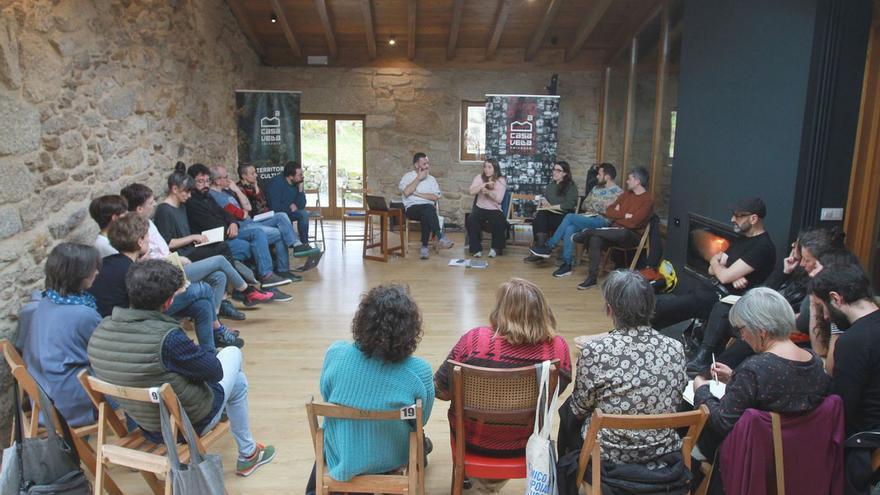Professionals and art lovers of various disciplines gathered at A Casa Vella (Allariz) to answer, among other things, the question about the “House of Creativity”. No specific definition was reached, but all attendees agreed that general dimensions are not helpful in this regard. and that it is dangerous to associate the term with a model only or with the countryside – as in the case of Ourense, the place is framed.
Through different round tables – with approximately 30 people – invited to the conference organized – co-funded by the European Union and Xunta de Galicia via Agadic – also spoke from other autonomous communities to contribute perspectives and experiences of cooperation with the various centers and departments.
Apart from contemplating the term “House of Creation”, other pioneering experiences in Catalonia and the Basque Country were analysed. Regarding the first, María Muñoz – promoter with Pep Ramis of L’animal a l’esquena – raised the different twists she had encountered since 1997 and began offering a space similar to the one now in Allariz. Regarding the second, Idoia Zabaleta explained the case of Azala – another Basque creative space – which serves as a meeting point for experimentation, reflection and critical exchange for artists from different disciplines.
Both professionals are part of the world of dance, something they have in common with Nuria Sotelo – who, along with Robyn Villanova, choreographed the venue where they all met yesterday. But there were also photographers or graphic designers among those present, to give a few examples.
Another issue that was addressed was the urgent need to start working with less strict management and financing models, by the state, which gives flexibility to operations. In this sense, Sean Rodriguez – the technical advisor who is part of the Ministry of Culture and Sports – takes over the initiative and the contributions of the attendees.
“We have to realize that sometimes we don’t know how to pass on more open projects to the management as well and that there are occasions when they accept happily when proposed,” noted Javier Cuevas, artist from the Canary Islands. To which another of those present added with a conscious self-criticism: “And that which we are proposing now, thinking that it is perfect, perhaps in a few years it will not work and must be changed. And nothing happens.
“It’s kind of a secluded monastery.”
It’s January, two years have passed since A Casa Vella began turning into something tangible, but the business is taking shape much earlier. “We spent maybe five years already drawing the lines of action we want to address and renovate the house. It was completely abandoned and we salvaged it,” Aser Sotelo, Nuria’s father, recalls of the beginnings as he waits for the food he prepares to simmer.
The initial idea—beyond all possible expectations of the rural Amiadoso area, where this idyllic setting is located—was that creatives and artists in need could find a haven of peace in a rural setting. “It’s a kind of secluded monastery where the ‘monks’ can leave but they know no one will come in from the outside to disturb their muse,” he jokes.
There is part of the house for rooms as accommodation and a community kitchen. The artists decide whether they will eat with the house managers or prefer to cook themselves. “Everyone is free to set their own schedules,” he adds, “and this is one of the main axes of our philosophy.” In a few months, they’ll also have a stand ready in an outdoor patio for cultural activities and more bedrooms so that multiple creatives can conflat in the same space for as long as they need.
100 artists in two years of operation
“In these two years, more than 100 people from different disciplines and different countries have passed here. We also hold training courses for professionals on performing arts and intangible heritage. The only thing required is that you come with the intention of creating something,” Nuria Sotelo confirms.
The web is woven little by little, but it is resistant and protection and inspiration transversal. Under the roof of A Casa vella, everyone contributes and receives horizontally. No hierarchies. “Alliances between groups and festivals become stronger with spaces like this,” he concludes.





